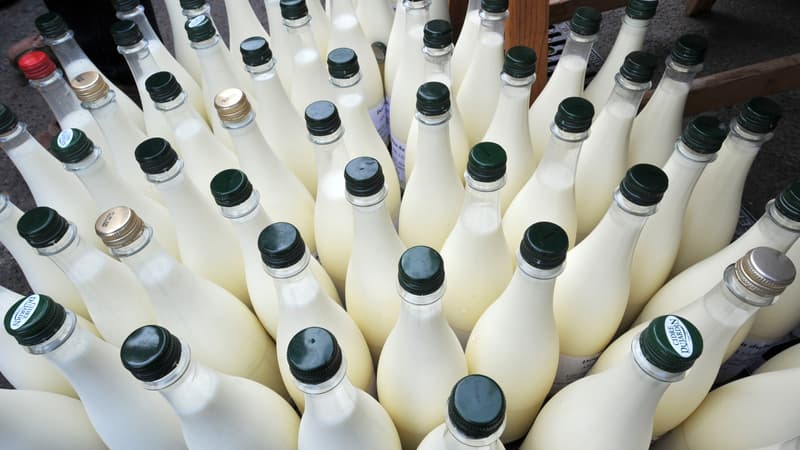From milk bottle to…milk bottle: recycling professionals are hard at work bringing milk to join bottled water and soft drinks on the shelves of the circular economy, one of the levers to take France’s donkey cap off when it comes to recycling plastics.
New cutting edge technology
Example near Châlons-sur-Saône, at the Paprec factory. Shiny blue and yellow machines, conveyor belts in every direction: French recycling leader inaugurates new technology so plastic from milk bottles (high-density polyethylene, HDPE) can be recycled into packaging, instead of inferior quality which was the norm.
Until recently, these materials were turned into pipes for the construction industry, a kind of “recycling.” “This technological step should not be underestimated,” explains Sophie Sicard, an executive at Paprec. But for her, “the holy grail” is a return to “food packaging.”
Until now, only polyethylene terephthalate (PET) in water and soft drink bottles and a small portion of milk bottles have benefited from an approval to return to food contact after mechanical recycling. Recycled HDPE is now racing to join it.
Enough to extend the life of significant volumes of plastics: each year about 2,200 million liters of milk are sold in supermarkets, more than half of which are in bottles, which are 20% PET and 80% HDPE.
A meticulous industrial process
For the return to the shelves, the process, in the course of approval, is meticulous. The plastic balls, extracted from the yellow containers of the French, contain bottles and trays, which must be separated into four flows according to the material (HDPE or PP) and the color (transparent or colored), explains the director of the factory, Sylvia. Rubio, facing the ranks of excessive classification.
Machines equipped with infrared sensors, developed by the manufacturer Pellenc ST, determine the properties of the material to separate the two types of plastic. For HDPE, the milk bottle will end up separated on one side and the non-food streams on the other.
Second phase, crushing/washing: the bottles are cut “into small particles of one to two square centimeters”, explains David Verrien, director of production at the plant. The flakes are then washed to remove residues and prepare for the final phase of transformation into plastic granules: extrusion. Then the flakes are melted at 200 degrees.
In the building where the smell of clothes floats, these granules are “reheated to a few hundred degrees” to be decontaminated, particularly their olfactory molecules. It is this decontamination that allows the recycled material to return to food grade.
France is way behind on its recycling targets
Thanks to the new processes, French manufacturers hope to increase the proportion of plastic bottles recycled, currently “around 60%”, according to Sophie Genier, director of recycling at the Citéo eco-organization that manages the end of life of packaging.
There is urgency: on average, France recycles less than 30% of its plastic packaging, far from the 65% set by Brussels for 2025.
A return to food packaging should make it possible to better pay manufacturers who say they are struggling to balance their books and deplore the lack of visibility of a “ragged market”:
He advocates “obligations to incorporate recycled material, which create a market for recycled material, autonomous, with its price, high or low, it doesn’t matter.”
Source: BFM TV


